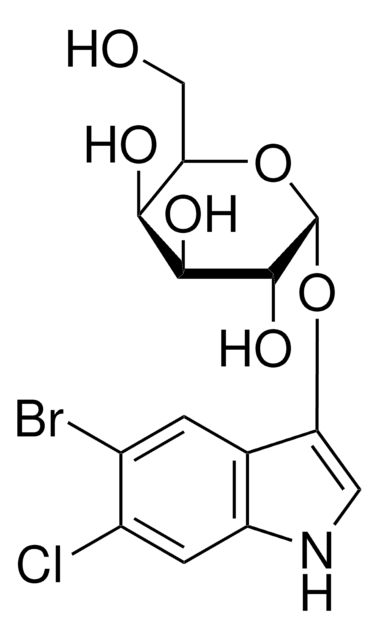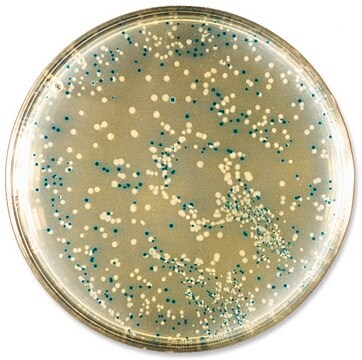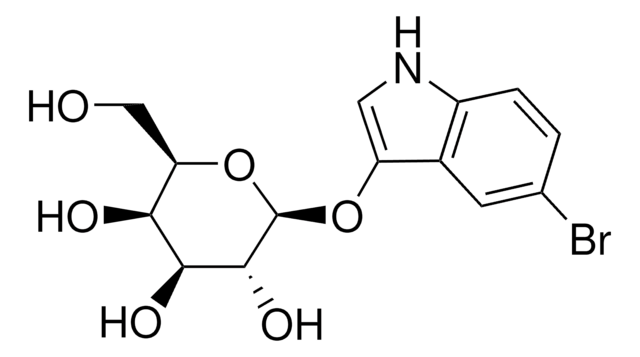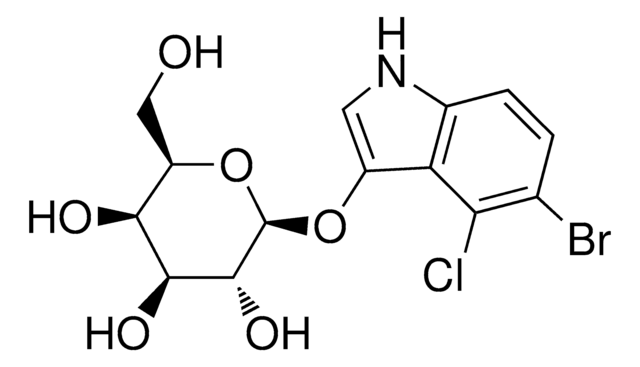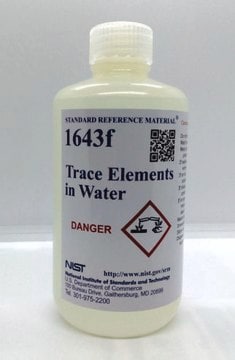S7313
S-Gal® sodium salt
reagent for selection of recombinant bacterial clones
Sinónimos:
3,4-Cyclohexeneoesculetin-B-D-galactopyranoside sodium salt
About This Item
Productos recomendados
grado
for molecular biology
esterilidad
non-sterile
Análisis
≥95% (HPLC)
formulario
powder
DIV
not for in vitro diagnostic use
solubilidad
H2O: 100 mg/mL
idoneidad
suitable for β-galactosidase test
temp. de almacenamiento
room temp
Descripción general
Aplicación
Características y beneficios
- More intense color contrast than X-gal
- Water-soluble and autoclavable for easiest use
- Excellent for use in automated colony counters
- No need to make stock solutions
Otras notas
formulation. A medium prepared with S-Gal® is moderately dark due to the presence of ferric ammonium citrate. This darker background often provides enhanced contrast for automated colony counting or isolation.
Precaución
Principio
Ligadura / enlace
Reconstitución
Información legal
Producto relacionado
Código de clase de almacenamiento
11 - Combustible Solids
Clase de riesgo para el agua (WGK)
WGK 3
Punto de inflamabilidad (°F)
Not applicable
Punto de inflamabilidad (°C)
Not applicable
Equipo de protección personal
Eyeshields, Gloves, type N95 (US)
Certificados de análisis (COA)
Busque Certificados de análisis (COA) introduciendo el número de lote del producto. Los números de lote se encuentran en la etiqueta del producto después de las palabras «Lot» o «Batch»
¿Ya tiene este producto?
Encuentre la documentación para los productos que ha comprado recientemente en la Biblioteca de documentos.
Los clientes también vieron
Nuestro equipo de científicos tiene experiencia en todas las áreas de investigación: Ciencias de la vida, Ciencia de los materiales, Síntesis química, Cromatografía, Analítica y muchas otras.
Póngase en contacto con el Servicio técnico
